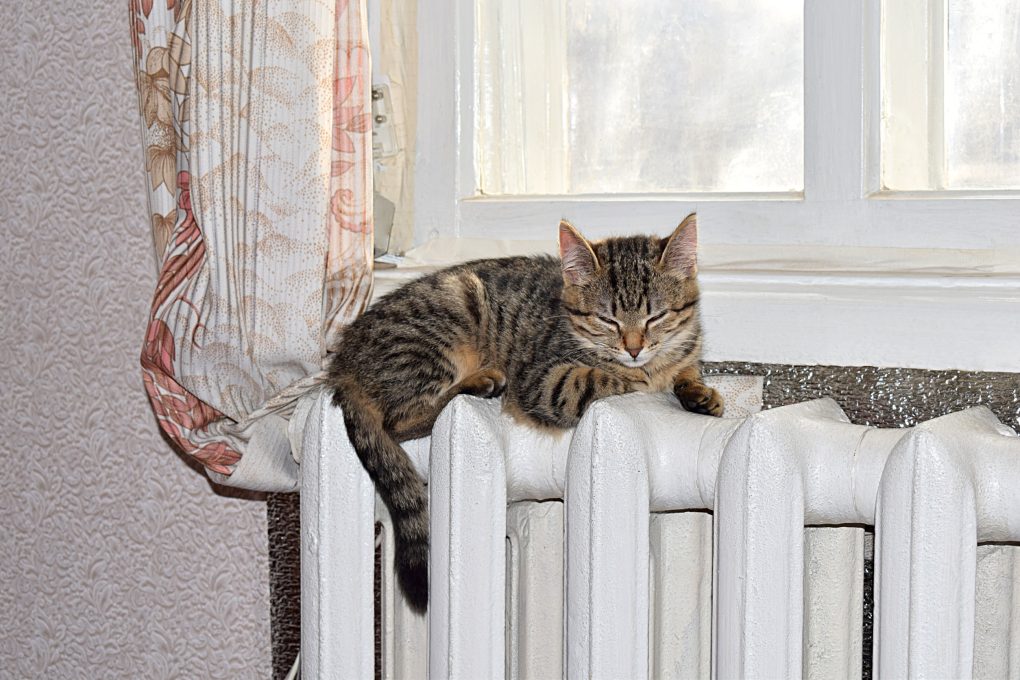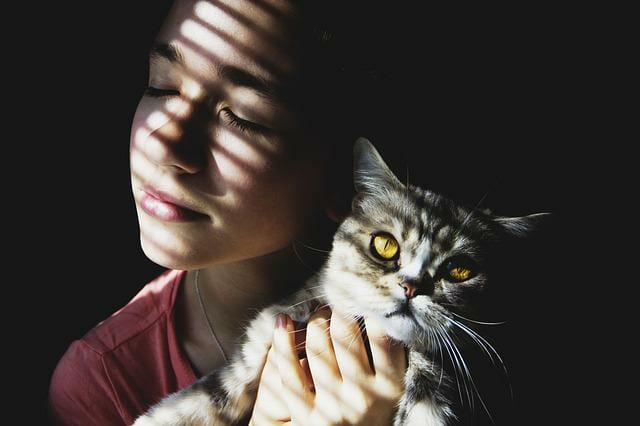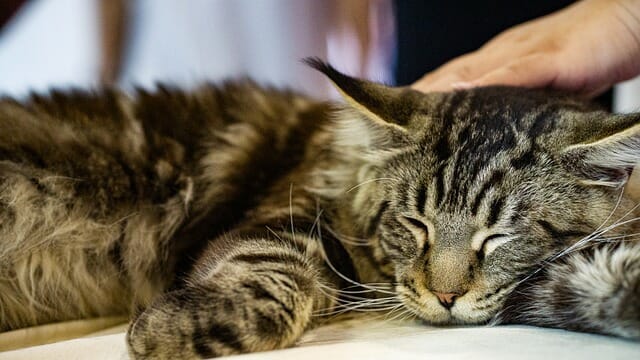How to Know if Your Cat Is in Heat: Tips to Calm Your Cat in Heat
Female cats go into heat, also known as estrus, periodically throughout their adult lives. During this time, they become more vocal and active and may exhibit certain behaviors showing that they are in heat.


Here are some signs to look out for:
- Vocalization: A cat in heat may vocalize more than usual, making sounds often described as yowling or howling. These vocalizations are typically louder and more persistent than the usual meowing.
- Increased affection: Some cats become more affectionate during estrus and may seek more attention from their owners.
- Excessive grooming: A cat in heat may groom themselves more frequently and thoroughly than usual.
- Rolling around: According to VCA Animal Hospital, a cat in heat may roll around on the floor more than usual, rubbing against objects and furniture.
- Increased activity: A cat in heat may become more active and restless, pacing around and being more exploratory.
- Tail twitching: A cat in heat may twitch their tail more often than usual, often raising it up and to one side.
- Posturing: When a cat is in heat, it may assume a “lordosis” posture, in which they arch its back and raise its hindquarters.
Table of Contents
Tips to Calm a Cat in Heat
Provide a Quiet Environment
A quiet environment can also help calm a cat in heat. Loud noises and sudden movements can increase a cat’s stress levels and make them more agitated. Avoid making loud noises or sudden movements around your cat, especially during their most active times.
Please set up a quiet, comfortable space for your cat to retreat when they need a break. This can be a separate room, a cozy bed, or a crate. Covering windows with curtains or blinds can help block out noise and activity from outside, which can be a source of stress for some cats.
Some cats respond well to calming scents, such as lavender or chamomile. You can use essential oils, sprays, or diffusers to create a calming atmosphere. During this time, it’s important to avoid introducing new stimuli that can cause stress or excitement, such as new toys or visitors.
Reduce Stressful Stimuli
Reducing stressful stimuli is also important to calm a cat in heat. Cats in heat can be easily stressed and overwhelmed by changes in their environment, so it’s important to minimize any potential sources of stress. For example, a dirty litter box can be stressful for cats and may make them more prone to accidents. Keep the litter box clean and provide enough litter boxes for all your cats.
If your cat is indoor-outdoor, consider limiting their access to outdoor areas during their heat cycle. This can help prevent them from encountering other cats and getting into fights. Cats thrive on routine, so maintain a consistent feeding and play schedule during your cat’s heat cycle.
Loud noises, such as vacuum cleaners or loud music, can be stressful for cats. Try to keep the house as quiet as possible during this time. If you have other cats in the house, try to limit your cat’s exposure to them during their heat cycle. This can help reduce the risk of fighting or other stressful interactions.
Offer Comforting Toys and Blankets
Offering comforting toys and blankets can also help calm a cat in heat. Toys and blankets can give your cat a sense of security and comfort, which can help reduce its stress levels. Look for toys and blankets that are soft, cozy, and comfortable for your cat to snuggle with. Materials like fleece, faux fur, and cotton are good options.


As mentioned earlier, some cats respond well to calming scents like lavender or chamomile. You can apply these scents to your cat’s toys or blankets to help create a calming atmosphere. Some cats enjoy the warmth of a heated blanket or pad, which can help promote relaxation and calmness. Make sure to use a pet-safe heating pad and supervise your cat while they are using it.
Interactive toys, such as puzzle feeders or wand toys, can help distract your cat and provide mental stimulation, which can help reduce their stress levels. Rotating their toys and blankets regularly is a good idea to keep your cat interested and engaged. This can help prevent boredom and provide new sources of comfort and stimulation.
Introduce Catnip
Introducing catnip is another way to help calm a cat in heat. Catnip is a herb that contains a chemical called nepetalactone, which can have a calming and soothing effect on cats. Not all cats are affected by catnip, but those that are can experience a variety of reactions, from relaxation to increased playfulness. Look for catnip that is fresh and fragrant, as this will be more appealing to your cat.
There are many catnip-infused toys and treats available on the market. These can be a great way to introduce catnip to your cat and provide a source of stimulation and relaxation. You can also offer fresh catnip to your cat by growing it yourself or purchasing it at a pet store. Fresh catnip can be more potent than dried catnip and may be more appealing to some cats.
While catnip can help calm a cat in heat, it’s important to use it in moderation. Too much catnip can cause over-stimulation and make your cat more anxious or agitated. Not all cats react well to catnip; some may experience adverse reactions like vomiting or diarrhea. If you notice any negative reactions, discontinue using the catnip immediately.
Play With Your Cat
Playing with your cat can be a great way to help calm them down during their heat cycle. Playtime allows your cat to burn off excess energy and frustration and can also help distract them from their heat-related behaviors. Interactive toys like wand toys, laser pointers, or puzzle feeders can help engage your cat’s mind and body, providing a fun and stimulating activity to help them relax.
Setting aside time each day for playtime with your cat is important. This can help establish a routine and provide your cat with a predictable outlet for their energy. Positive reinforcement techniques, such as rewarding your cat with treats or praise when they engage in play, can help encourage them to participate and enjoy playtime.
If your cat is not in the mood for play or seems hesitant, don’t force it. Instead, give them space and time to adjust to play and try again later. If your cat is indoors, consider taking them outside for supervised playtime. This can give them new stimuli and help them burn off excess energy.
Get a Heating Pad


Using a heating pad can also help calm a cat in heat. The warmth of a heating pad can mimic the warmth of another cat, which can help soothe and comfort your cat. Here are some tips for using a heating pad with your cat:
- Choose a safe heating pad: Make sure to choose one specifically designed for pets, as regular heating pads can get too hot and cause burns. Pet-specific heating pads often have lower heat settings and safety features such as automatic shut-offs.
- Test the temperature: Before using the heating pad, test the temperature with your hand to ensure it’s not too hot. You want it to be warm and comforting but not hot enough to cause burns.
- Place the heating pad in a comfortable spot: Choose a spot where your cat likes to rest and place the heating pad there. Place it on a flat surface and cover it with a soft blanket or towel.
- Monitor your cat: While using a heating pad can be comforting for your cat, it’s important to monitor them to ensure they don’t overheat or get too close to it. Check on them regularly and adjust the temperature or placement of the heating pad if necessary.
